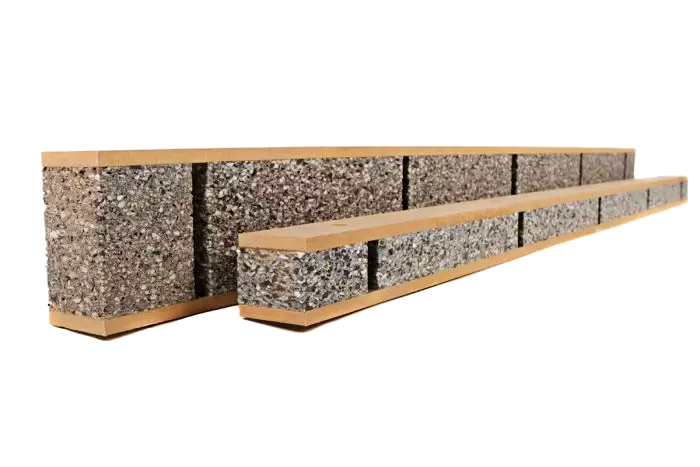Sound insulation for stairs | Part 2: Soundproofing a wooden stairs
A wooden staircase can cause noise problems in various ways: by means of impact noise, dull walking noise (usually bothering the neighbours), or airborne noise, noise travelling through the stairscase and audible in the room behind or under the stairs. On this tips page you can read on how to soundproof a wooden staircase and which products to use.
Soundproofing a wooden staircase
You can soundproof a wooden staircase with two different products and methods. The first and best way to soundproof the underside of staircase is to install a 'floating ceiling' underneath the staircase with Akoestikon Acoustic Studs. With the help of these products you can make a decoupled ceiling, or wall, that covers the stairs completely. This often done when a staircase acts as a partion wall between two houses.
The second method is ideal for situations with a limited amount of space. It does not insulate impact noise that much, but it will insulate against airborne noise, such as talking people on the stairs, very well. The product to do this with is Isomat KE Fiber, a mass loaded vinyl, we explain this a bit further in the text.
Soundproofing with Akoestikon Acoustic Studs 
The best method is to conceal the steps behind a 'floating ceiling/wall' using the Acoustic Studs. With the help of these decoupling Acoustic Studs you can mount a soundproofing ceiling, as it were, against the bottom of the staircase, which soundproofs both contact- and airborne noise. This 'ceiling' acts as a soundproofing barrier covering the whole staircase.
Akoestikon Acoustic Studs are best described as flexible battens, two MDF slats connected by vibration insulation, that are to be mounted against the back of the staircase. The Akoestikon Insulation Wool is a filling to be put in the cavity inbetween the Studs. When this is in place you mount a double layer of plasterboard to the Acoustic Studs forming a ceiling, or wall, depending on the situation (plasterboard and mounting materials to be taken care of yourself).
Soundproofing with Isomat KE 
If there is not enough space for a thick soundproofing ceiling or wall (Acoustic Studs take up at least 90 mm, without a finishing layer) Isomat KE is an excellent alternative. Isomat sheets are made of recycled tyres and contain both rubber and steel. We recommend to use the heaviest Isomat KE, 14 kg/m², which is about 5 mm thick.
First step is to mount a layer of plasteboard, or plywood, underneath the staircase. Next step is to take another layer of the same material and apply a sheet of Isomat KE with Stauf glue. Mount this combination with Isomat towards the staircase to the first layer and screw these layers tightley together. By putting Isomat KE inbetween two sheets of plasterboard, or wood, the insulation value of the material is significantly increased.
What does Isomat do?
Isomat ensures that a light surface will offer more resistance to airborne noise. The heavy weight doesn't allow sheet material to resonate, which improves the insulation value. The risers of a wooden staircase should therefore ideally be insulated with Isomat KE (gluing and then finishing with a wooden plate, by screwing through the Isomat). If part of the stairs simultaneously forms a wall, you can also insulate it with Isomat. A step-by-step plan called "Sound Insulation for Light Walls” can be found on our tips page. This step-by-step plan can also be used for insulating the risers.
Questions? 
Do you have any questions or comments on this subject, or would you like to receive product samples? Please feel free to contact us!

 Sound Absorption
Sound Absorption  Sound Insulation
Sound Insulation  Vibration Isolation
Vibration Isolation  Silent Ventilation
Silent Ventilation  Accessories
Accessories  Thermal & Acoustic Insulation
Thermal & Acoustic Insulation